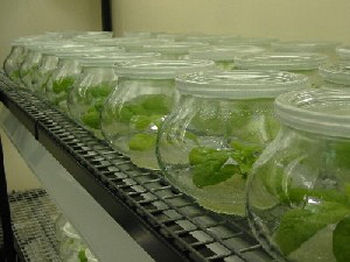Transient expression technology (07-11 September 2008)
Rapid screening methods to detect & study recombinant proteins in plant cells
Transient expression allows the characterisation of newly generated chimeric genes within days rather than the months required to generate transgenic plants. Analysis of protein synthesis, folding, stability and targeting to subcellular compartments has been shown to be reliable and reproducible.The ability to co-express multiple genes also allows dose-response analysis of potentially toxic dominant negative mutants. This has helped to dissect complex cellular pathways in vivo, using manipulations that would be lethal in transgenic plants. The primary aim of this course is to introduce scientists from academia and industry to these techniques and their various applications. Participants are encouraged to bring their own samples to test during the course. The course also aims to assist those who are already using these techniques to optimise the methods, troubleshoot and identify tricks and traps.
This 5-day course is limited to 25 participants and early registration is highly recommended.
 Course highlights:
Course highlights:
Common transfection methods
-
Preparation of protoplasts from Arabidopsis and tobacco
-
Naked DNA transfer via electroporation or chemical methods
-
Agrobacterium-mediated tobacco leaf infiltration
Popular reporter assays
-
Enzymatic analysis (GUS, Amylase, luciferase)
-
Confocal laser scanning microscopy (GFP, YFP, RFP)
Introduction to functional protein analysis
-
Cell fractionation and secretion assays
-
In vivo labelling and immunoprecipitation
-
Co-precipitation and pull-down assays
-
Co-expression analysis using dominant mutants
Individual technical support
Participants who provide their own test-samples will be given the opportunity to try the most suitable expression method during the course and are requested to propose the particulars of the experiment during registration.
To apply for this year's course : click here
Download the course poster for display: click here